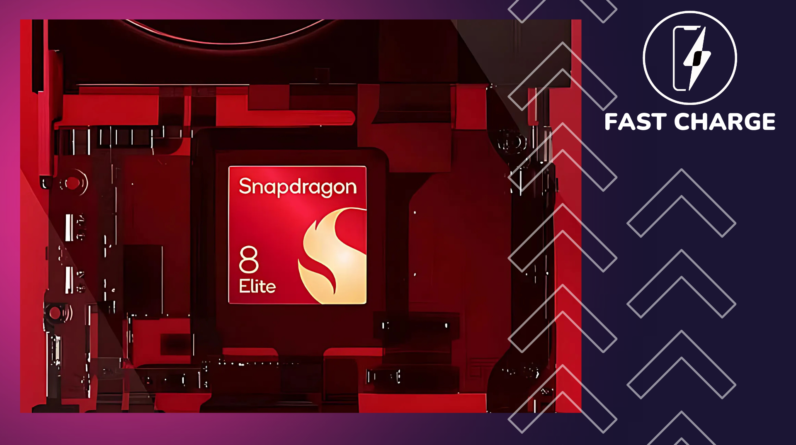
OPINION: Qualcomm revealed the Snapdragon 8 Elite this week, a totally new top-end chipset headed to flagship smartphones in the coming months – and it’s a big deal.
The fact that the Snapdragon 8 Elite sports the same branding as the laptop-focused Snapdragon X Elite should say a lot about how Qualcomm sees this chipset. In fact, with second-gen Oryon CPU tech on a more efficient 3nm process, it’s actually better than the 4nm X Elite in some regards.
The chipset is comprised of two 4.32GHz Prime Cores, the fastest in the mobile chipset market right now, along with six 3.35GHz Performance Cores, with no Efficiency Cores this time around.
There’s also a new Adreno GPU with a split architecture for the first time, not only boosting gameplay capabilities but power efficiency by up to a whopping 40% compared to the 8 Gen 3, which should translate to better gaming experiences that last longer on a single charge.
Don’t forget AI
And, of course, with a massive focus on AI from Qualcomm in practically every premium chipset it manufactures at this point, the 8 Elite also boasts a massive uptick in NPU performance. It also ties in with the Oryon CPU for the first time, allowing the CPU to handle some of the heavy lifting while the NPU focuses on computational processes that power the on-device AI experiences.
This will allow for new ‘AI Agents’ that can analyse data on your device and essentially run tasks on your behalf. Honor has already given us a glimpse at what that’ll look like on the Magic 7 series, with its AI assistant able to cancel subscriptions and even order your favourite coffee without you having to tap a single button.


However, for me, it’s the sheer processing power of the chipset that stands out most – and it’s all down to that aforementioned second-gen Oryon CPU architecture. In fact, it looks like it’ll beat every single chipset on the market right now, including Apple’s A18 Pro – and that’s huge for Android.
Apple has had a comfortable lead on the Android competition for years at this point, with Cupertino’s A-series silicon chipsets delivering benchmark scores that are head and shoulders above what you’d find on the equivalent flagship Android. The A17 Pro was faster than the Snapdragon 8 Gen 3, the A16 Bionic was more performant than the Snapdragon 8 Gen 2 and so on.
How about the benchmarks?
However, I got the chance to benchmark a Snapdragon 8 Elite reference device at Snapdragon Summit this week, and I was floored by the results I saw.
Take Geekbench 6 for example; it’s a popular CPU-focused benchmark that we use all the time here at Trusted Reviews, giving us a good idea of what a smartphone chip can deliver. During the benchmark session, I saw scores of 3229 in single-core tests and a whopping 10,601 in multi-core tests.


It’s the latter that really stands out to me, as it’s not only better than the competing MediaTek Dimensity 9400’s 9600, but the A18 Pro within the top-end iPhone 16 Pro Max, which scored 8167 in our internal benchmark tests.
The difference is just as stark when it comes to GPU performance, as showcased in early 3DMark benchmark testing. In the 3DMark Wildlife Extreme test, the Snapdragon 8 Elite reference device scored an impressive 7084, almost 3000 points more than the 4128 managed by the iPhone 16 Pro Max in the same test.


And, you guessed it, that’s also true of the oft-neglected web browsing speed of devices, with Speedometer scores of 31 beating the 25.2 from the iPhone 16 Pro Max in the same tests. Given that plenty of Android apps are essentially web app wrappers, this should also translate to improved performance in apps.


These are truly staggering results that signify a huge jump in year-on-year performance, not only leaving the 8 Gen 3 in the dust but every other smartphone chipset on the market right now. This is the chipset that levels the playing field between Android and iOS, and I’m excited by what this might mean for Android users going forward.
With such an uptick in performance, it could well be that we’ll see more console-level games available on Android, as has been the case with the past few years on iOS with the likes of Resident Evil Village and Assassins Creed Mirage available to download on the App Store.
It could also translate to more capable Android apps in general, with the processing power to handle way more than was ever possible before.
Now, it’s worth noting that I used a reference device and not a commercially available smartphone, so there may be some disparity between what I’ve seen this week and what we’ll see from Snapdragon 8 Elite-equipped phones in the near future.
But, given that leaked OnePlus 13 benchmark scores align pretty closely with what I’ve seen – in Geekbench 6, anyway – I’m quietly confident about the levels of performance we’ll be seeing very soon.
Now, the only question is, when will we start seeing these Snapdragon 8 Elite devices appear? Well, we might not have to wait as long as usual.






